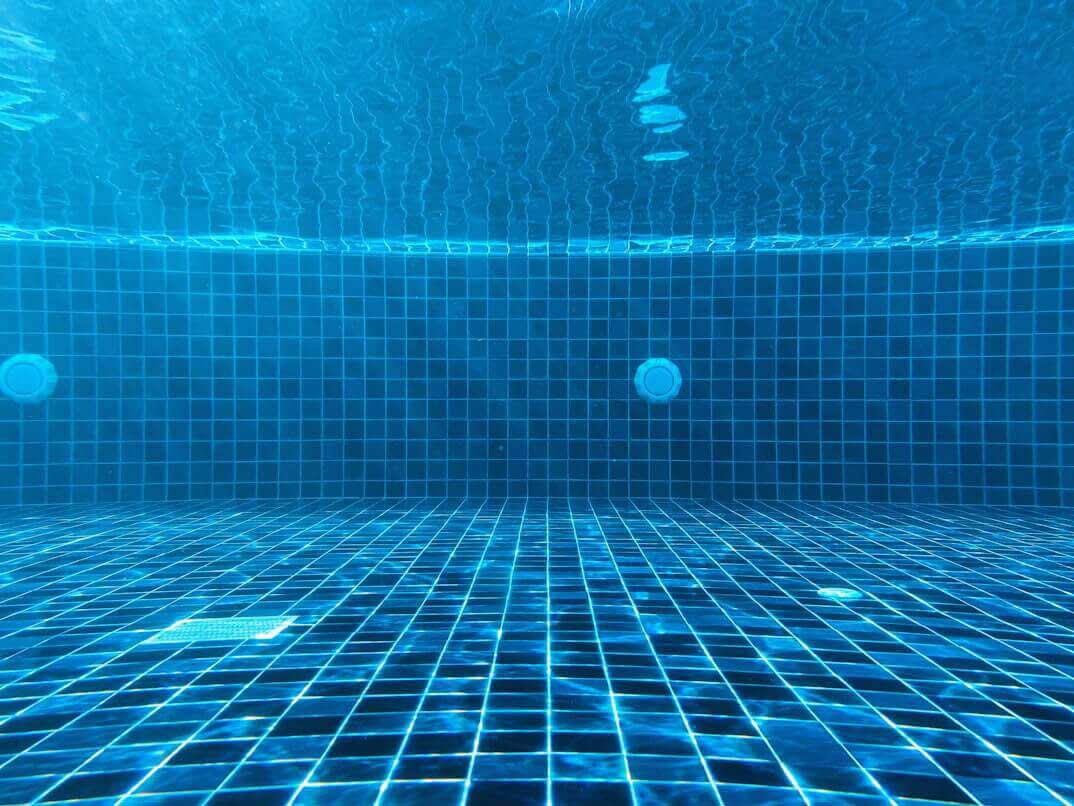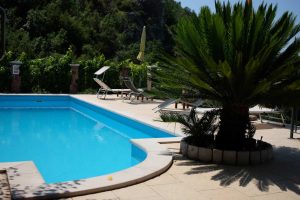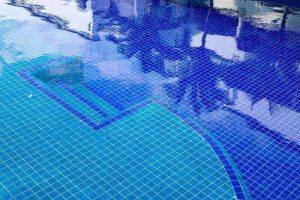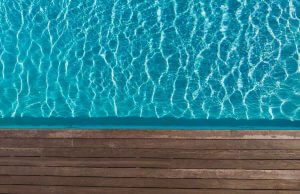Choosing a swimming pool is a big decision, one that blends design, engineering, and lifestyle. With so many pool types on the market, homeowners often ask how long a fiberglass pool will last compared to vinyl lined pools or concrete pools. Even trusted celebrity contractors like Mike Holmes have publicly said that a fiberglass swimming pool, “made with the right products, will be the best pool anyone could order”.
At Okeanos Pools GTA, we share this belief, which is why every fiberglass pool installation we complete in the GTA is built with high quality materials, expert oversight, and a focus on long term investment.
Longevity of a Fiberglass Swimming Pool
Decade-by-Decade Timeline
Years 0 – 5: Settling In
During the first few seasons, the pool completes its settling phase. The surrounding backfill compacts and the shell aligns with soil pressure. No structural adjustment is needed—fiberglass is a one-piece form with inherent flexibility, so the risk of cracking is negligible. Surface integrity remains high, with no liner seams or plaster curing to manage. Standard water balancing is sufficient, and Okeanos activates both the lifetime structural warranty and 25-year gelcoat warranty upon installation.
Years 5 – 15: Set-and-Forget Lifestyle
In this timeframe, the pool reaches a point of functional consistency. The gelcoat typically retains its gloss and colour with minimal cosmetic wear. Structural performance remains unchanged. Routine maintenance—pH balancing, filtration, seasonal closing—is straightforward and requires no intervention beyond standard homeowner care. Any equipment replacements (such as a pump or chlorinator) are discretionary and typically driven by preference, not necessity. From a performance standpoint, this is a stable, low-maintenance period.
Years 15 – 25: Mid-Life Checkpoint
After approximately two decades of use, the pool’s structure remains sound, assuming chemistry and seasonal care have been consistent. Some gelcoat dulling may occur in high-contact areas, such as steps or benches, though this is cosmetic. A light polish may be used to restore surface clarity. Salt systems or heating components may reach end-of-life, but the basin does not require resurfacing or structural repair. By this point, concrete and vinyl pools of similar age typically require major restoration.
Years 25 – 40: Second-Generation Enjoyment
Independent testing confirms that fiberglass retains over 90% of its flexural strength beyond the 30-year mark. Structurally, the pool continues to perform as designed. If sunlight exposure has affected colour uniformity, a spray-and-buff gelcoat refresh is an option, typically completed within two days. These are surface-level updates only. The core shell requires no replacement. With proper installation and chemistry, performance remains consistent with original specifications.
What Determines a Pool’s Lifespan?
While fiberglass is a highly durable material, long-term performance depends on how well the pool is installed, maintained, and protected. A properly built and professionally managed pool shell can last for decades with no structural intervention. Below are the primary variables that influence lifespan:
Water Chemistry
Maintaining stable water chemistry is critical. If pH or calcium hardness levels drop too low, the water can begin to extract resins from the gelcoat over time, weakening the surface. The recommended range for pH is 7.2 to 7.8, with calcium hardness kept above 175 ppm. These are standard targets, but consistent adherence makes a measurable difference in surface preservation.
Installation Quality
The precision of the installation directly affects structural longevity. Okeanos uses laser-leveled crushed-stone foundations and over-dig trenches that align exactly with manufacturer specifications. This reduces stress on the shell and prevents issues like torsion, uneven settling, or stress cracking, particularly in freeze-thaw conditions.
Drainage and Groundwater Control
Hydrostatic pressure can build up during wet spring conditions or major thaws. To mitigate this, we install perimeter sump systems that allow rising groundwater to be safely pumped away before it can exert force on the underside of the pool. Proper drainage design is essential in Ontario’s fluctuating climate and should never be overlooked.
Seasonal Maintenance
Each winter introduces new risks: frost can expand around fittings, skimmers, and return lines if not properly protected. Thorough winterization, including lowering the water line, blowing out lines, and sealing return fittings, is part of long-term care. Improper seasonal procedures remain one of the most common causes of avoidable damage.
Cleaning and Surface Tools
The gelcoat surface is resilient but should still be treated with care. Avoid metal brushes, pumice stones, or abrasive cleaning tools that can scuff the surface. A soft nylon brush or microfiber pad is sufficient for all routine cleaning. Minor scuffing compounds over time, so proper technique matters.
Why Fiberglass Pools Outlast Other Types
The question of durability often comes up early in the pool buying process. Properly installed, an inground fiberglass pool can last more than 40 years. That’s significantly longer than vinyl liner pools, which require liner replacements every decade or so, and concrete pools, which are vulnerable to cracking and resurfacing costs.
Fiberglass, by contrast, flexes gently with freeze-thaw cycles and shifting soil, making it uniquely suited to Ontario’s harsh seasons. That’s why we back our shells with a lifetime structural warranty.
Gelcoat Finish That Stays Smooth for Decades
The gelcoat finish is what makes a fibreglass pool both beautiful and practical. Its non-porous surface keeps algae growth from taking hold, which means fewer chemicals are required and the pool water stays balanced with less effort.
For homeowners, this translates into lower maintenance, a more efficient filtration system, and a swimming pool surface that remains smooth and inviting long after the installation process. Unlike concrete, which needs resurfacing every 10 to 15 years, a quality fiberglass pool shell from Okeanos Pools GTA is designed to preserve its appearance for decades.
Minimal Repairs, Maximum Peace of Mind
One of the biggest advantages of fiberglass compared to other pool types is how few repairs occur over its lifespan. Because the pool shell is strong and resistant to leaks, pool owners don’t have to deal with the higher maintenance associated with vinyl liner or concrete alternatives.
Regular maintenance still matters, water chemistry should be checked, a pool cover used when appropriate, and inspections performed to avoid problems, but when properly maintained, fiberglass pools last with very little intervention. For many homeowners, that simplicity is what makes the investment worthwhile.
Energy Efficiency That Lasts as Long as the Pool
There’s a hidden powerhouse beneath the surface: fiberglass pools are inherently more energy-efficient. Their white-core laminate construction and integrated insulation help retain heat longer, cutting your utility bills from the first season onward. The slick, non-porous surface reduces chemical demand by up to 30%, meaning less strain on pumps and filters—and fewer refills from the chemical store.
Add a solar cover and high-efficiency pool pump, and your energy savings compound across decades, not just summers.
Choose a Fiberglass Pool Designed to Last with Okeanos Pools GTA
So, how long will a fiberglass pool last? With proper care, the answer is measured in generations, not years. By choosing Okeanos, homeowners and commercial property managers gain the support of engineers with over thirty years of combined experience, a commitment to using only quality fiberglass materials, and an installation process refined for the unique environmental factors of the GTA.
Whether you’re considering a backyard retreat or exploring commercial fiberglass pools, we invite you to contact us to discuss your project. Explore our fiberglass pool installation options today and take the first step toward a pool designed to endure beautifully.





